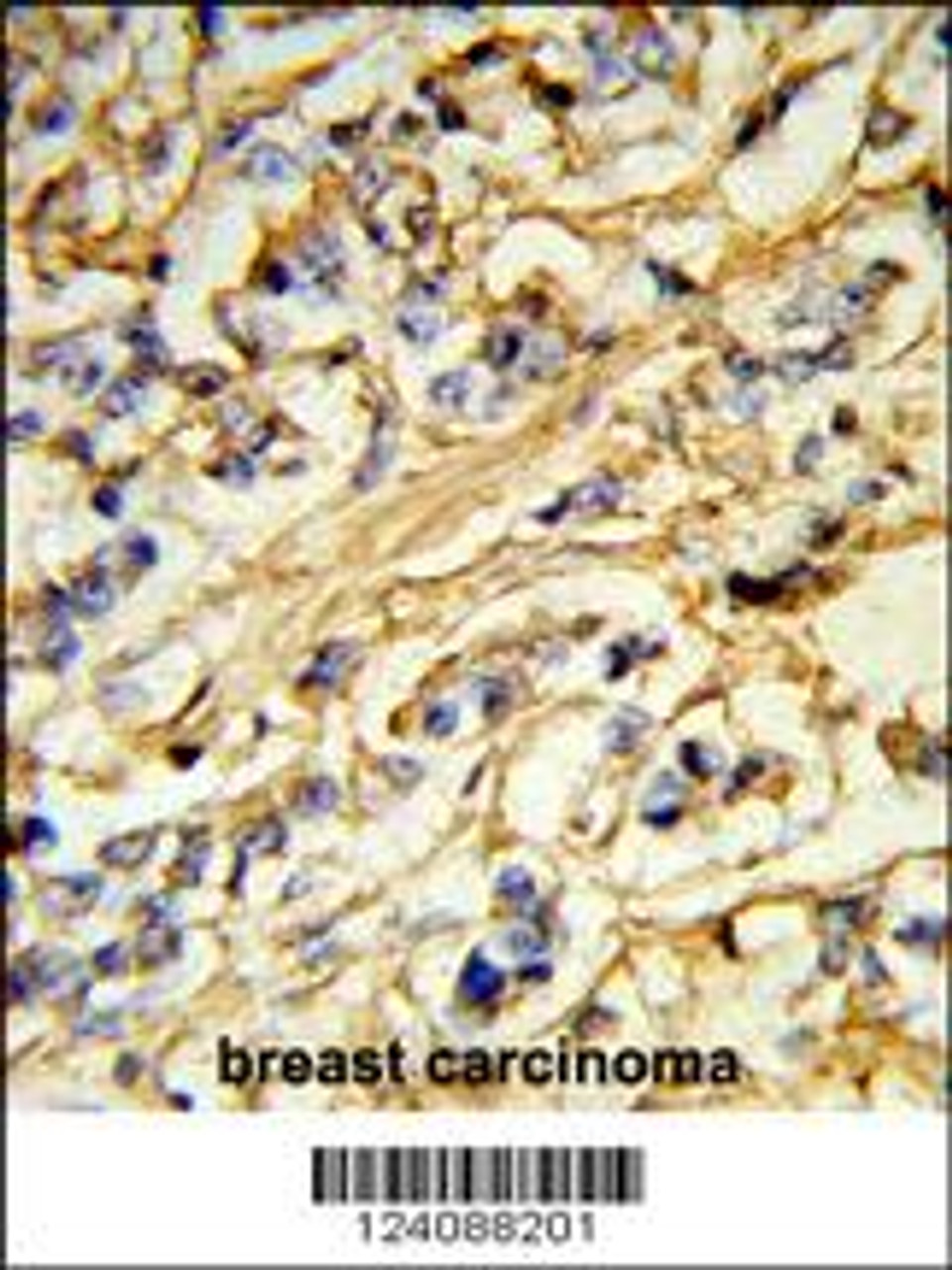Product Description
CHMP4B Antibody | 63-990 | ProSci
Host: Rabbit
Reactivity: Human
Homology: Predicted species reactivity based on immunogen sequence: Chicken, Zebrafish, Mouse, Xenopus
Immunogen: This CHMP4B antibody is generated from rabbits immunized with a KLH conjugated synthetic peptide between 51-79 amino acids from the N-terminal region of human CHMP4B.
Research Area: Cell Cycle, Signal Transduction
Tested Application: WB, IHC-P, Flow
Application: For WB starting dilution is: 1:1000
For IHC-P starting dilution is: 1:50~100
For FACS starting dilution is: 1:10~50
Specificiy: N/A
Positive Control 1: N/A
Positive Control 2: N/A
Positive Control 3: N/A
Positive Control 4: N/A
Positive Control 5: N/A
Positive Control 6: N/A
Molecular Weight: 25 kDa
Validation: N/A
Isoform: N/A
Purification: This antibody is purified through a protein A column, followed by peptide affinity purification.
Clonality: Polyclonal
Clone: N/A
Isotype: Rabbit Ig
Conjugate: Unconjugated
Physical State: Liquid
Buffer: Supplied in PBS with 0.09% (W/V) sodium azide.
Concentration: batch dependent
Storage Condition: Store at 4˚C for three months and -20˚C, stable for up to one year. As with all antibodies care should be taken to avoid repeated freeze thaw cycles. Antibodies should not be exposed to prolonged high temperatures.
Alternate Name: Charged multivesicular body protein 4b, Chromatin-modifying protein 4b, CHMP4b, SNF7 homolog associated with Alix 1, SNF7-2, hSnf7-2, Vacuolar protein sorting-associated protein 32-2, Vps32-2, hVps32-2, CHMP4B, C20orf178, SHAX1
User Note: Optimal dilutions for each application to be determined by the researcher.
BACKGROUND: CHMP4B is a member of the chromatin-modifying protein/charged multivesicular body protein (CHMP) protein family. The protein is part of the endosomal sorting complex required for transport (ESCRT) complex III (ESCRT-III) , which functions in the sorting of endocytosed cell-surface receptors into multivesicular endosomes. The ESCRT machinery also functions in the final abscisson stage of cytokinesis and in the budding of enveloped viruses such as HIV-1. The three proteins of the CHMP4 subfamily interact with programmed cell death 6 interacting protein (PDCD6IP, also known as ALIX) , which also functions in the ESCRT pathway. The CHMP4 proteins assemble into membrane-attached 5-nm filaments that form circular scaffolds and promote or stabilize outward budding. These polymers are proposed to help generate the luminal vesicles of multivesicular bodies.
 Euro
Euro
 USD
USD
 British Pound
British Pound
 NULL
NULL












